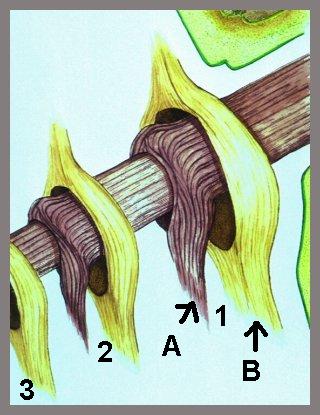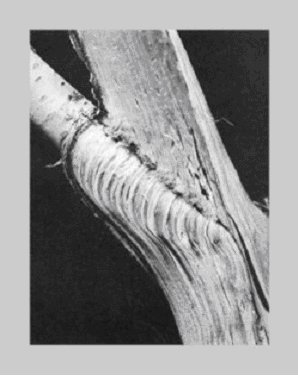Hi Guy, we haven't gone at it for a while, so let's have at it.
I'm surprised to read you saying "What if a collar did not form in that time", you being a stickler for proper semantics and all.
Here is a definition of a collar, from
Tree Dictionary.com:
"Branch Collar - The branch collar and trunk collar are collectively called the branch collar. Where branches meet the trunks of most trees, there will be a series of collars. Each year two new collars will form. One collar is a trunk collar and the other a collar which is made up of branch tissues. Collectively we call them the branch collar. These collars are what support the astronomical weight of the branch (cantilever). Note, when looking at a tree from the outside, the two collars are often spoken of as the branch collar, e.g., “do not remove branch collars when pruning” "
There are two problems with a branch collar forming once the limb is removed. First, once a branch is removed, it is gone and won't be forming anymore annual collars to interlock with the trunk collar. From that point on there is some callus that forms around the wound, which turns to wound wood, and eventually is just covered up by normal wood, but there isn't a collar.
The second problem is this is clearly a co dominant stem, not a branch, so there is no collar. If there is no collar to start with, and no collar can form, you statement makes no sense.
I suspect what you meant, is there might be a problem finding the line of demarcation between living and dead tissue. On a healthy looking, fast growing tree, after one year, you are suggesting that you won't be able tell living from dead?

Now to the silly advancing decay argument.
You suggest the the branch tissue, now dead because the majority of the branch was removed, will be an open route for decay into the tree, and that the dead stub will be food for fungus allowing them to build up populations and vigor, thereby increasing their ability to attack CODIT walls.
I say this is simply unfounded.
Consider my statement that "most of the limb was removed". What did i mean by that? Well, even if you flush cut, there's still tissue from the limb in the trunk. It is cone shaped, and in a lot of cases runs all the way to the pith.
Here's a link to a drawing and a picture from Treedictionary.com:
It's clear that when you cut off a limb, your not removing it all. The other thing that is well understood by most arborists, is that covering a wound whether it is with paint, or if new wood grows over it, it does not slow the process of decay! Shigo even suggested that it actually speeds decay.
If that stub, in one years time will somehow "give the decay a head start", then it follows that the center of that cone shaped area inside the trunk, is also giving decay a head start.
Are you suggesting that hollowing out that cone would slow decay?
No it would not.
You, and others here, would do well to wrap their heads around the theory of CODIT. All that left over wood from a removed branch is abandoned. the tree doesn't care about it. CODIT describes how the tree walls off the decay. Nowhere in Shigos CODIT theory, is callus growing over and covering a wound even mentioned.
Wound closure is not part of CODIT.
You are asking your self, how can this tree survive this injury? Rot will surely go into the tree and quickly spread up and down the other stem!
Don't worry. Trees add new wood every year. This outer layer is where all the good stuff happens in a tree. Because of this a tree can be hollow and still live on.
When injured CODIT tells us there will be a wall 4. The wall is set up between the tree and any new wood that is added from that day forward.
In time, everything you see in the picture may be decayed away, but the tree can still be alive, strong, and healthy.
Although Willow decays fast, it grows fast. By the time that wood decays to the point it has lost it's strength, the tree will have grown in circumference enough that it won't matter, and wall 4 will stop the decay from advancing into the new wood.
You may be asking, "Then how do some trees rot out and die or break?"
It's simple. Young healthy vigorous trees set up good CODIT walls and out grow decay problems. Old, stressed, over trimmed, trees that underwent un-needed crown reductions, trees that get spiked on trims, and diseased trees, do not.







